58 A researchbased Canadian professional learning initiative
Bạn đang xem bản rút gọn của tài liệu. Xem và tải ngay bản đầy đủ của tài liệu tại đây (267.56 KB, 62 trang )
Number and Operations
A research-based Canadian
professional learning initiative
Day 1 Slide 1
Three-Day Agenda
Day 1
- Introduction
- Overview of PRIME
- Representing
a Number
- The Number Maps
- Key Ideas Across the
Phases
- Fractions Across
the Phases
- The Operations Map
- Getting Ready for
Day 2
Day 1 Slide 2
Day 2
Day 3
- Introduction
- Introduction
- Phasing Multiplication
Tasks
- Diagnostic Tools
from Day 2
- Student Tasks (Day 1)
- Fostering
Communication
- Algorithms Across
the Phases
- Open & Choice Tasks
- Manipulatives Across
the Phases
- The Diagnostic Tools
- Getting Ready for
Day 3
- Planning
with PRIME
- Problem Solving
with PRIME
- Reflecting Back/
Moving Forward
Petals Around
the Rose
The Rules:
•The name of the game is petals
around the rose.
•The name of the game is
important.
•The answer is either zero or
even.
•I can only repeat the rules or
tell you the answer.
Roll #1
The answer is 4.
Roll #2
The answer is 6.
Roll #3
The answer is 0.
Roll #4
The answer is 4.
Roll #5
The answer is 12.
Roll #6
The answer is 0.
Want to keep going?
/>.aspx?id=L576
Excerpt from Bill Gates’ original program:
PRINT "THE NAME OF THE GAME IS PEDAL AROUND THE ROSES"
No wonder he was having a tough time.
PRIME Map Research
• University-conducted research
• Canadian research and content
• Designed using current research on
developmental learning and with
K–Grade 6 curriculums in mind
• Tested with thousands of K–Grade 7
students in two stages of field testing
• K–Grade 3 students were interviewed.
• Grades 4–7 students wrote written
tests.
Day 1 Slide 4
Your Curriculum
and Supporting
Documents
PRIME
Your Textbook/
Resources
Implementation
and Support
- Informs the teacher
- Focuses on meeting
students’ needs in
developmentally
-appropriate ways
-Provides support
Day 1 Slide 14
Benefits of PRIME
PRIME provides a framework to help you
• understand the development of students’
mathematical thinking
• become more comfortable with the math
you teach
• differentiate instruction to enable students
to experience success more often
• see connections in order to focus on the
“big picture” of mathematics
Day 1 Slide 6
Exploring the Kit
4 Poster Maps: 2 for Number
2 for Operations
Guide to Using the Developmental Map
Background and Strategies book
Diagnostic Tools booklet
Day 1 Slide 7
Representing a Number
Represent each number as many ways
as you can. Use pictures, words,
numbers, and manipulatives.
5
Day 1 Slide 8
1
1
2
0.1
321
There are different, but
equivalent, representations
for a number.
This is a key idea in mathematics. It is
relevant for all number types and
across multiple grades.
Day 1 Slide 9
Number Map—
5 Developmental Phases
PHASE 1 PHASE 2
PHASE 3
PHASE 4 PHASE 5
Beginner
Concrete
Whole
Number
Comfort
More
Abstract
Flexible
Comfort
with whole
numbers to
10
Comfort
with whole
numbers to
100
modelled
concretely
Comfort with
whole
numbers to
1000 and
some
fractions and
decimals
Comfort
with whole
numbers
greater
than 1000,
fractions,
decimals
Flexibility
with
numbers
Day 1 Slide 10
What It Means To Be “In a Phase”
Phase 2 could look like this
Phase 1 Phase 2 Phase 3 Phase 4 Phase 5
C1
C2
C3
C4
C5
S1
S2
S3
Day 1 Slide 11
Being “in a phase”
describes a certain level
of mathematical
sophistication.
Day 1 Slide 12
Number Map—8 Key Ideas
There are 5 key concepts:
Concept 1 Numbers tell how many or how much.
Concept 2 Classifying numbers provides
information about the characteristics of
the numbers.
Concept 3 There are different, but equivalent,
representations for a number.
Concept 4 We use a number system based on
patterns.
Concept 5 Benchmark numbers are useful for
relating and estimating numbers.
Day 1 Slide 13
Number Map—8 Key Ideas
There are 3 key skills:
Skill 1 Recites counting patterns.
Skill 2 Compares numbers.
Skill 3 Uses conventional symbols to
describe numbers.
Day 1 Slide 14
Key Concepts vs. Key Skills
Key skills are tools that relate to the
application of key concepts. For example:
Compare
the conceptual notion of the
patterns in the place value system (KC 4)
with
the related skill of writing
multi-digit numerals (KS 3)
Day 1 Slide 15
The Number Map
and Key Ideas
PRIME’s key ideas (key concepts and key skills)
•
are meaningful “big ideas” that organize
the content of the map in order to show
underlying connections
•
help teachers understand their curriculum
Day 1 Slide 16
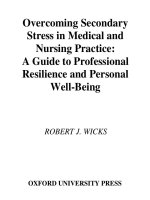
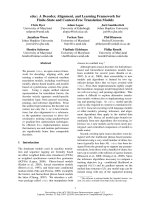
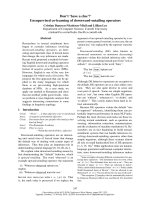
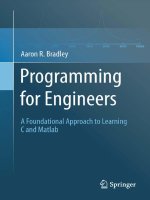
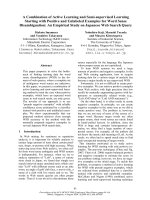

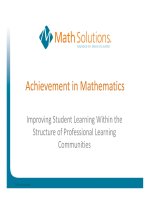
![picture yourself building a website with joomla! 1.6[electronic resource] step-by-step instruction for creating a high-quality, professional-looking site with ease](https://media.store123doc.com/images/document/14/y/ob/medium_oby1401382455.jpg)

